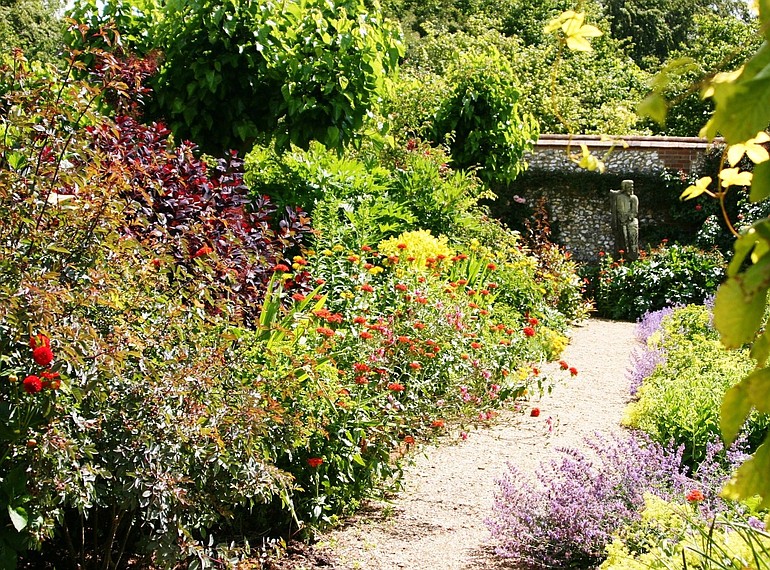The concept of creating a garden with a “sequence of bloom” is quite simple. Beginning in early spring, an invariable succession of plants comes into flower. As these flowers fade, another plant in the garden begins to bloom. By planting a proper selection of trees, shrubs and perennials, the process inevitably continues with waves of color from one plant to the next throughout the gardening season. The ultimate goal is a garden with 12 months of plant interest.
Expanding on this idea, a serious gardener can go beyond mere flower potential to draw you into the garden picture. Seasonal leaf color, fruit and berry production, bark and foliage texture and the silhouette of deciduous and evergreen trees are brought together to enhance the ever-changing panorama. From the dainty white blossoms of the early snowdrops to the pallid green petals of winter hellebores, the Southwest Washington gardener can have a plant worthy of the best magazine photographer every month of the year.
As early as March, the daffodils and tulips begin to flower. Before their foliage dies back, the straplike leaves of daylilies emerge. The warmth of spring forces yellow blooms from the bare branches of forsythia. A month later, the common lilac fills the air with its heady scent and the double-flowered Prunus serrulata Shirofugen cherry explodes in a cloud of white ruffles.
None of us would deign to take credit for the magic of a flowering plant. But it is up to the gardener to bring an individual garden portrait into focus with the material at hand. That is just one of our garden jobs. With the addition of experience, dirty fingers and time, any gardener can conjure up a uniquely personal garden image. No one gets it right the first time around. Mastering the art of gardening is a matter of trial and error.
Always the same
Regardless of the early or late arrival of spring, the sequence of bloom remains the same. It’s a matter of record that the Yoshino cherries in Washington, D.C., began to bloom on March 20 in 1945, but did not begin until April 15 in 1932, 1934, 1955 and 1965. Early or late, plants in the garden continue to flower in a certain order. The garden crocus will always bloom before the cherry tree and the Asiatic lilies will bloom after.
Through the process of gardening, the gardener learns that Oriental poppies (Papaver orientale) herald the onset of summerlike weather. The prominent flower buds unfold in overblown crepe-paper magnificence. The colors range from rich reds and oranges to salmon and watermelon pink. When the flower petals drop, an intriguing seedpod remains suspended high above the plant while the rosette of lower leaves turns yellow and withers down to a weedy patch of spent foliage.
Part of the gardener’s job is to choose a selection of plants that complement each other’s assets while compensating for any faults. As the poppy foliage dies away, a nearby Moonbeam coreopsis (C. lanceolata) fills the now open garden space with cheerful yellow flowers. If your color palette leans toward cooler shades, the pincushion flowers of Scabiosa Butterfly Blue and Pink Mist will continue to bloom well beyond the summer months.
Each daylily blossom lasts only one day, but many plants produce enough bloom to flower all of June. An adjacent row of Japanese wind flowers (Anemone japonica) will carry the garden from summer into autumn. Both purple coneflower (Echinacea purpurea Magnus) and its cousin, Black-eyed Susan (Rudbeckia fulgida Goldsturm) will flower all the way to frost. Hearty seed heads feed hungry birds in winter weather.
Occasionally, a gardener will have to use annuals to fill in gaps left by perennials that go dormant in late summer. Sometimes gaps are caused by the loss of a shrub or tree to disease or stress. Think of it as another chance to experiment with color. Try a bed of all white impatiens in the shade, classic red geraniums along a gravel path or cosmos in cool shades of pink for a garden in full sun.
The reality of hands-on gardening is that you are free to try any combination of plants you like in a live-and-learn state of mind. Like collecting a bouquet of flowers, you do not have to get the mix exactly right. What, after all, is right for you, them or me? An amateur job done whole-heartedly brings pleasure before the results are in and lays the groundwork for future expertise. The real art of gardening lies in learning to enjoy the garden you have created today even as you plan for changes in the sequence of years to come.
Robb Rosser is a WSU-certified Master Gardener. Reach him at Write2Robb@aol.com.



